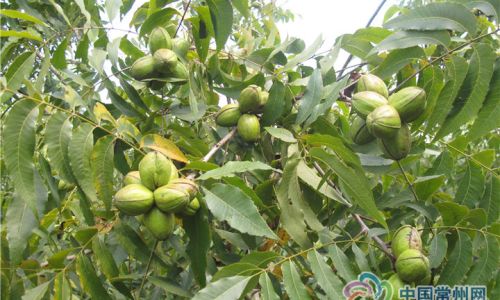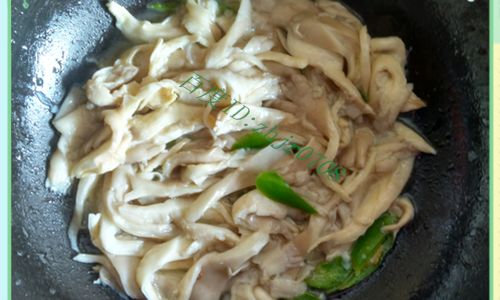Stir-fried chicken is a beloved dish across the globe, celebrated for its versatility, speed, and ability to transform simple ingredients into a flavor-packed meal. Whether paired with rice, noodles, or vegetables, achieving the perfect stir-fried chicken requires a blend of technique, timing, and an understanding of flavor dynamics. This article delves into the intricacies of creating a restaurant-quality stir-fried chicken dish at home, from selecting the right cut of meat to mastering the art of high-heat cooking. By the end, you’ll be equipped to craft a dish that balances tender chicken, crisp vegetables, and a glossy, aromatic sauce—every time.
The Foundation: Choosing the Right Chicken
The journey to a perfect stir-fry begins with selecting the ideal cut of chicken. Boneless, skinless chicken thighs are often the top choice for stir-fries due to their higher fat content, which keeps the meat moist and tender during high-heat cooking. Chicken breast, while leaner, can dry out quickly if not handled with care. To mitigate this, opt for thinly sliced breast meat and marinate it to retain moisture.

When purchasing chicken, prioritize freshness. Look for meat with a pink hue, firm texture, and no off-odors. If using frozen chicken, thaw it completely in the refrigerator to prevent excess moisture from seeping into the dish during cooking. Pat the chicken dry with paper towels before slicing to ensure proper searing and to avoid steaming the meat.
Marination: The Key to Flavor and Tenderness
Marination is not merely a preliminary step—it’s the cornerstone of a great stir-fry. A well-crafted marinade infuses the chicken with flavor while tenderizing the meat. A typical marinade includes soy sauce, rice wine (or sherry), cornstarch, and a touch of baking soda for extra tenderization. The cornstarch also creates a protective coating that seals in juices during cooking.
Classic Marinade Recipe:
- 2 tbsp soy sauce (light or dark)
- 1 tbsp Chinese rice wine (or dry sherry)
- 1 tsp sesame oil
- 1 tsp sugar
- 1/2 tsp baking soda (optional, for thigh meat)
- 1 tbsp cornstarch
- 1 tbsp vegetable oil
Combine all ingredients in a bowl, add sliced chicken, and mix thoroughly. Marinate for at least 30 minutes, or ideally overnight in the refrigerator. This allows the flavors to penetrate the meat and the enzymes in the marinade to break down tough fibers.

Preparing Aromatics and Vegetables
Stir-fries thrive on the interplay of textures and flavors. While the chicken is the star, aromatics like garlic, ginger, and scallions elevate the dish, while vegetables add crunch and color. Common vegetables include bell peppers, onions, carrots, broccoli, and snap peas. For a balanced stir-fry, aim for a mix of colors and textures.
Preparation Tips:
- Cut Vegetables Uniformly: Slice vegetables into evenly sized pieces to ensure even cooking.
- Blanch Tougher Vegetables: If using broccoli or carrots, blanch them briefly in boiling water before stir-frying to soften slightly.
- Prep Aromatics Separately: Mince garlic and ginger, and chop scallions into 1-inch segments. Keep them handy for quick addition during cooking.
The Cooking Process: Mastering High Heat
Stir-frying is a high-heat, rapid-cooking technique that requires precision. A carbon-steel wok is traditional, but a large skillet or cast-iron pan can also work. The goal is to sear the chicken quickly, locking in juices, while caramelizing the vegetables to develop depth of flavor.
Step-by-Step Cooking Guide:

- Heat the Wok: Preheat the wok over high heat until a drop of water evaporates instantly. Add 2-3 tbsp of vegetable oil (peanut or canola work best due to their high smoke points).
- Sear the Chicken: Add the marinated chicken in a single layer, spreading it out to ensure even cooking. Let it sear undisturbed for 1-2 minutes until golden brown. Stir-fry for an additional 2-3 minutes until cooked through. Remove and set aside.
- Stir-Fry Aromatics: In the same wok, add a touch more oil if needed. Toss in garlic, ginger, and white parts of scallions. Stir-fry for 30 seconds until fragrant.
- Cook Vegetables: Add vegetables in order of firmness, starting with onions and carrots, then bell peppers, and finally delicate greens like spinach. Stir-fry for 2-3 minutes until crisp-tender.
- Reintroduce Chicken: Return the chicken to the wok, along with any accumulated juices. Toss to combine.
- Add Sauce: Pour in the pre-mixed sauce (see below) and stir vigorously to coat everything evenly. Cook for 1-2 minutes until the sauce thickens.
- Finish with Aromatics: Toss in the green parts of scallions and a drizzle of sesame oil. Remove from heat immediately to prevent overcooking.
Sauce Preparation: Balancing Flavors
The sauce is the soul of the stir-fry, binding the ingredients together with a harmonious blend of salty, sweet, umami, and tangy notes. A classic stir-fry sauce combines soy sauce, oyster sauce, rice vinegar, and a touch of sugar. For depth, add chicken broth or a splash of Shaoxing wine.
Classic Stir-Fry Sauce Recipe:
- 3 tbsp soy sauce
- 1 tbsp oyster sauce
- 1 tbsp rice vinegar
- 1 tsp sugar
- 1/2 cup chicken broth (or water)
- 1 tbsp cornstarch (mixed with 2 tbsp water to form a slurry)
Whisk all ingredients except the cornstarch slurry in a bowl. Add the slurry just before cooking to thicken the sauce. Adjust ratios to taste: more sugar for sweetness, vinegar for acidity, or chili flakes for heat.
Advanced Techniques for Enthusiasts
- Velveting Chicken: For extra-tender meat, use the “velveting” technique. Marinate the chicken as usual, then blanch it in oil or boiling water for 30 seconds before stir-frying.
- Smoky Flavor: For a wok hei (breath of the wok) effect, cook over an open flame or use a blowtorch to char the wok slightly before cooking.
- Spicy Kick: Add fresh chili peppers, chili paste, or Sichuan peppercorns during the aromatics stage.
- Glaze Finish: For a sticky-sweet glaze, reduce the sauce further after thickening by cooking an additional 1-2 minutes.
Serving Suggestions and Pairings
A well-executed stir-fried chicken pairs beautifully with steamed jasmine rice, egg noodles, or even crispy chow mein. Garnish with toasted sesame seeds, chopped cilantro, or a squeeze of lime for brightness. For a complete meal, serve alongside a side of stir-fried greens or a refreshing cucumber salad.

Common Mistakes to Avoid
- Overcrowding the Pan: Cook in batches if necessary to prevent steaming. Overcrowding lowers the wok’s temperature, leading to soggy chicken.
- Underseasoning: Taste and adjust the sauce before adding it to the wok. Season lightly at each stage (marinade, sauce, final dish).
- Overcooking Vegetables: Vegetables should retain their vibrancy and crunch. Remove them from the heat while still slightly firm.
- Using Low-Quality Oil: Invest in a neutral, high-smoke-point oil like peanut or grapeseed for optimal searing.
Conclusion: The Joy of Stir-Frying
Stir-fried chicken is more than a meal—it’s a dance of heat, flavor, and texture. With practice, you’ll learn to gauge the wok’s temperature by instinct, adjust seasonings on the fly, and balance ingredients with ease. Experiment with different vegetables, proteins, and sauces to make the dish your own. Whether you’re a novice cook or a seasoned home chef, mastering stir-fried chicken offers endless rewards: a quick, healthy, and deeply satisfying meal that never fails to impress.
So, grab your wok, sharpen your knife, and let the sizzle begin. Your journey to stir-fry perfection starts now.






0 comments